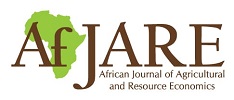Pastoral livestock market integration amidst improvements in physical and communication infrastructure: Evidence from northern Kenya
This article analyses the level of integration in pastoral markets in Kenya using high-frequency data generated through a crowdsourcing endeavour. The vector error-correction model framework was used to estimate the causal relationships between the short- and long-run market price.
